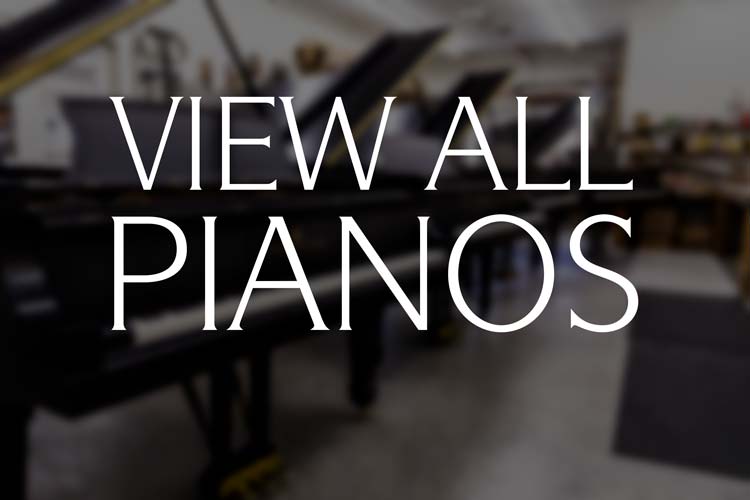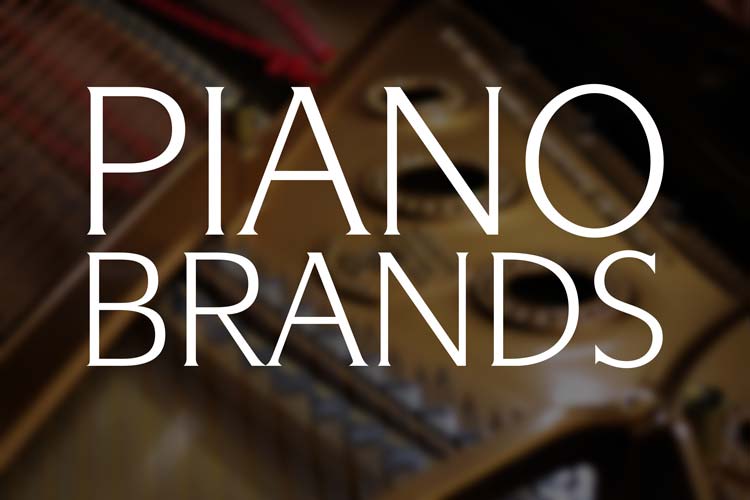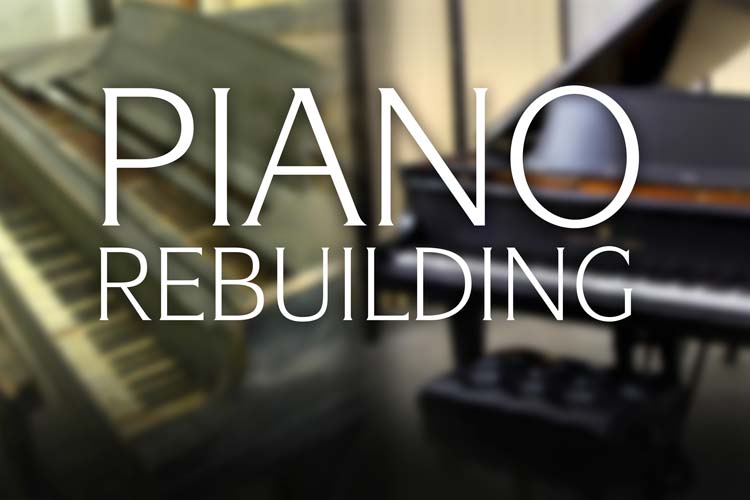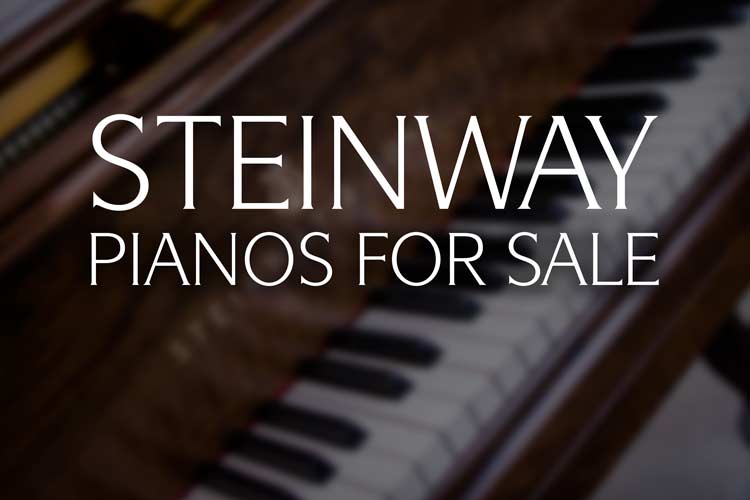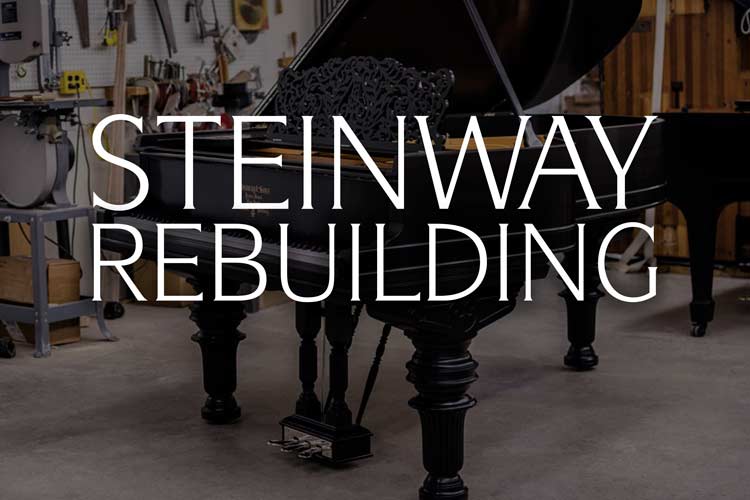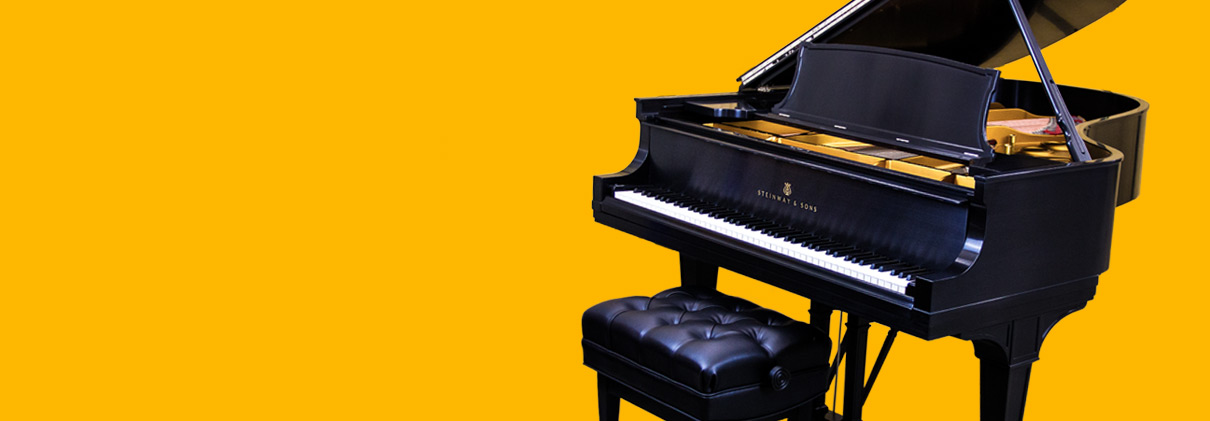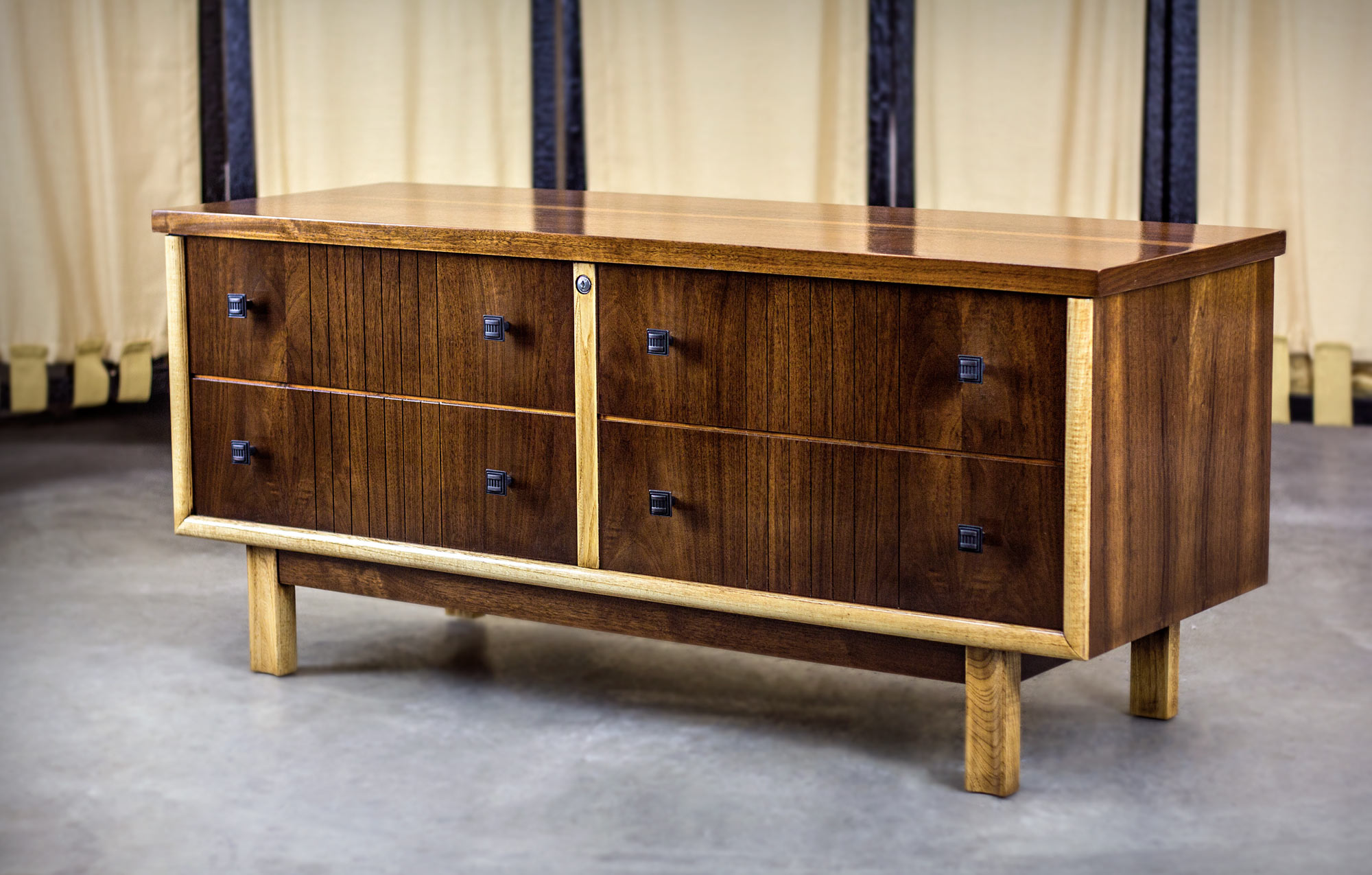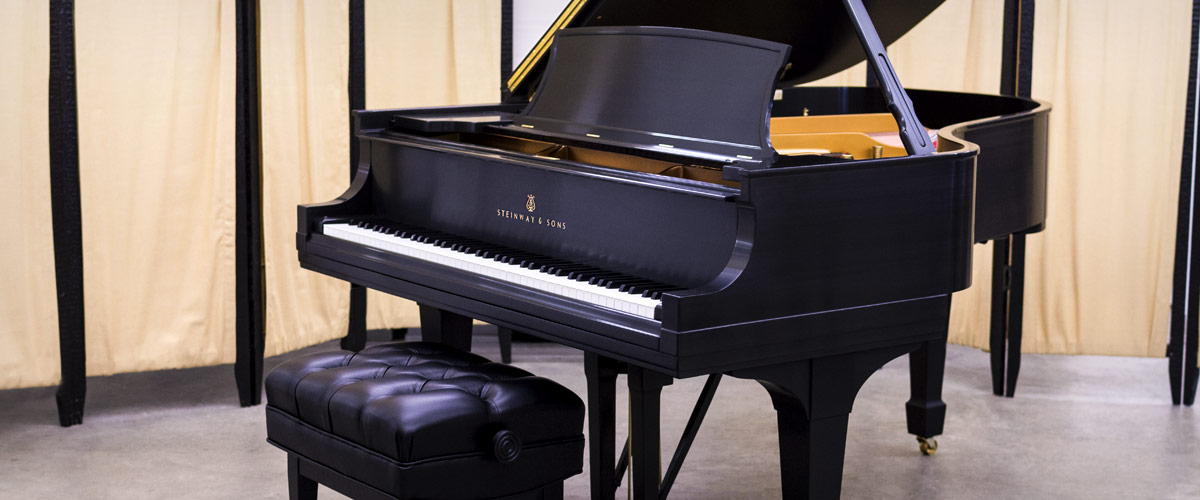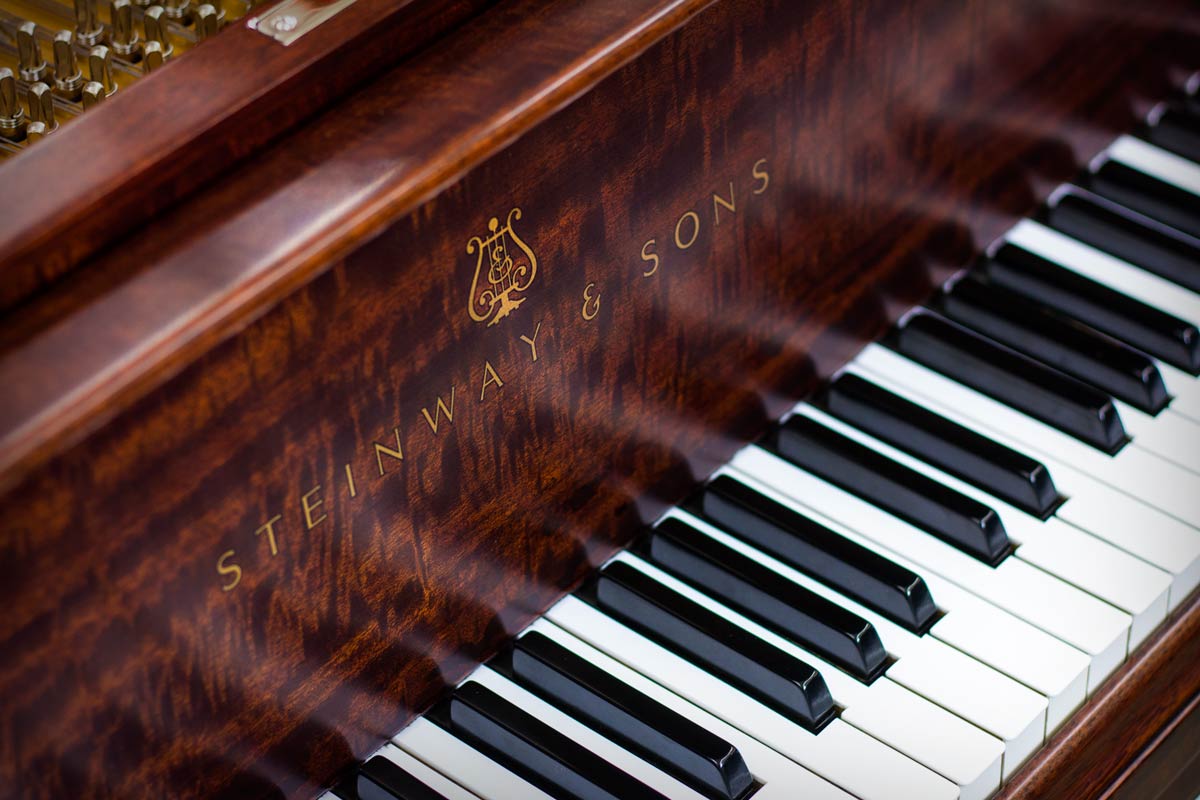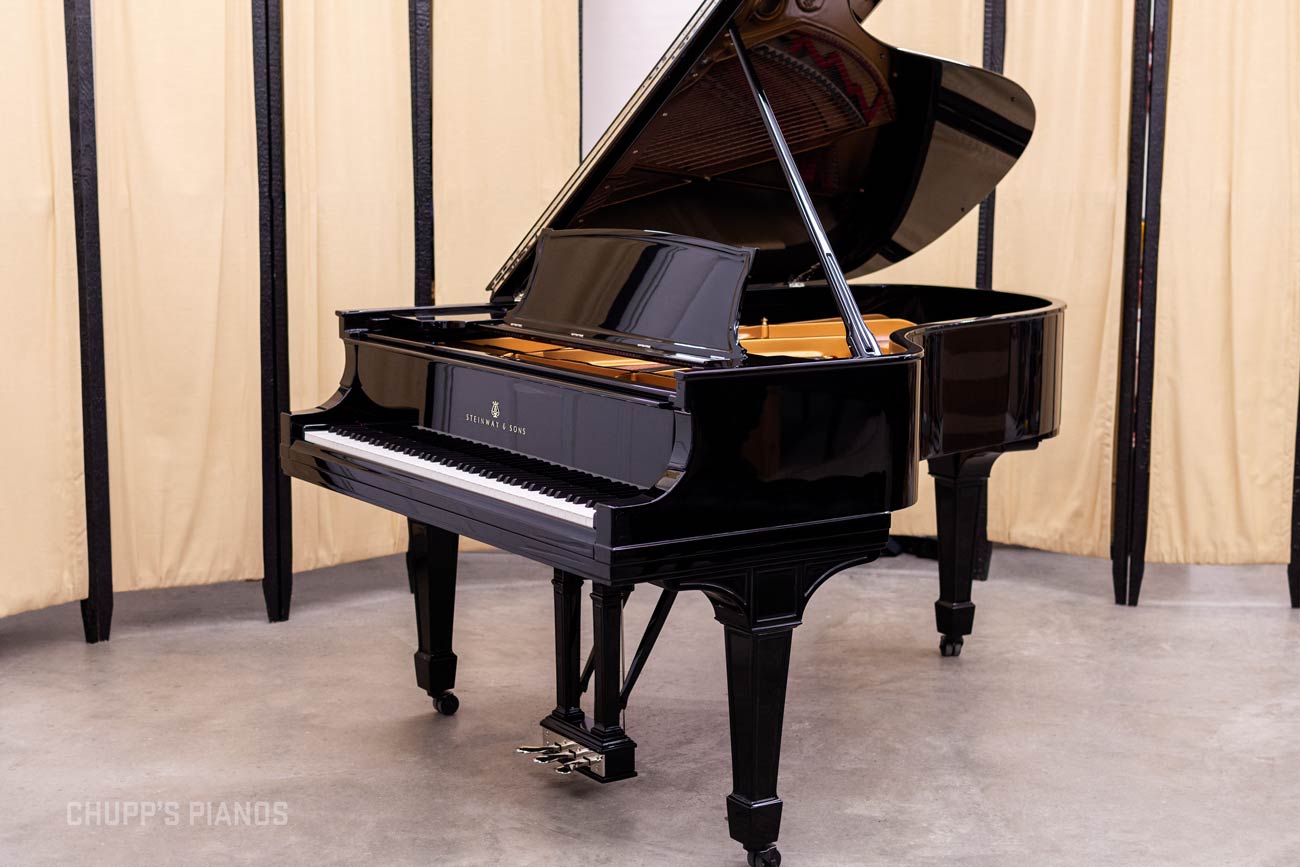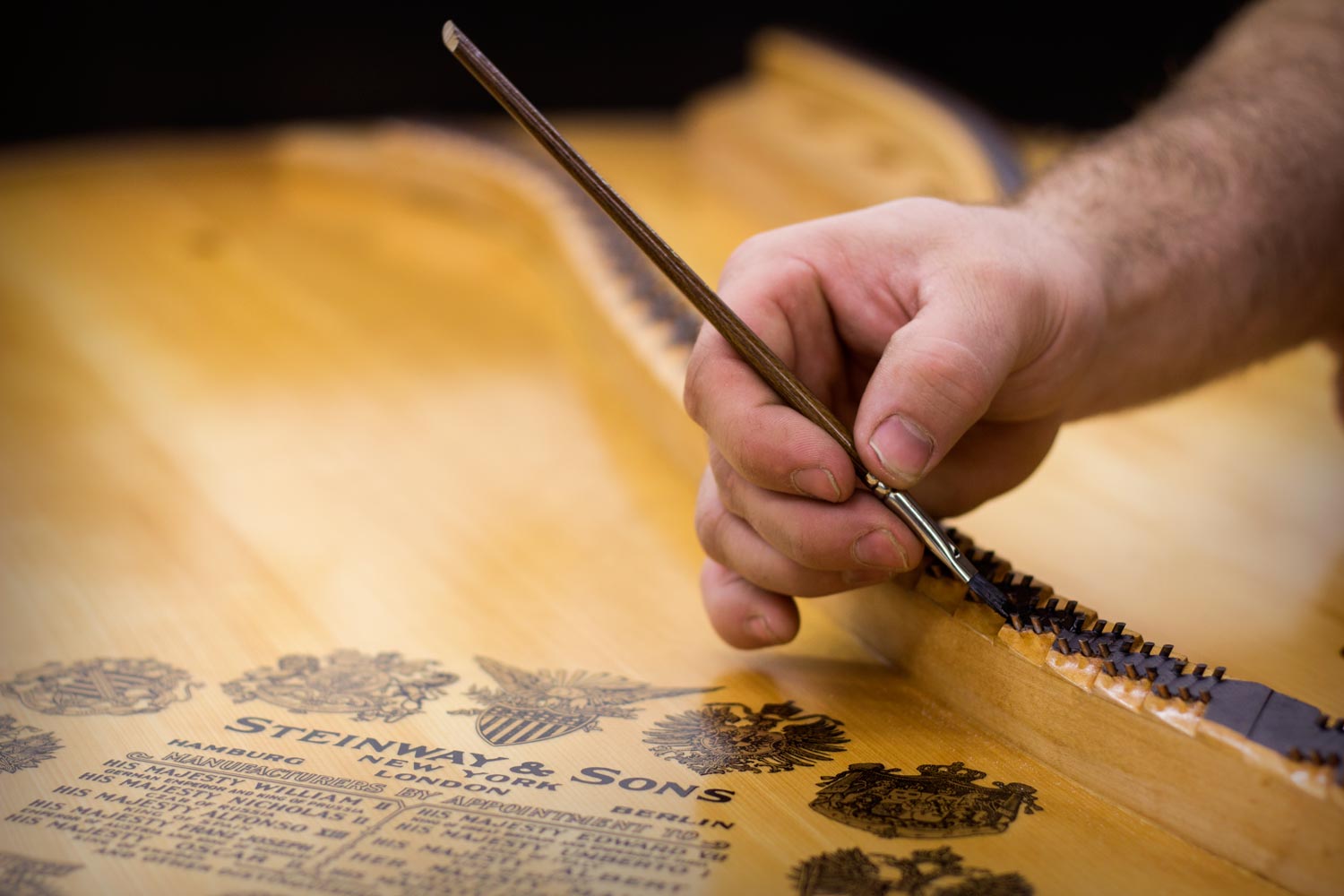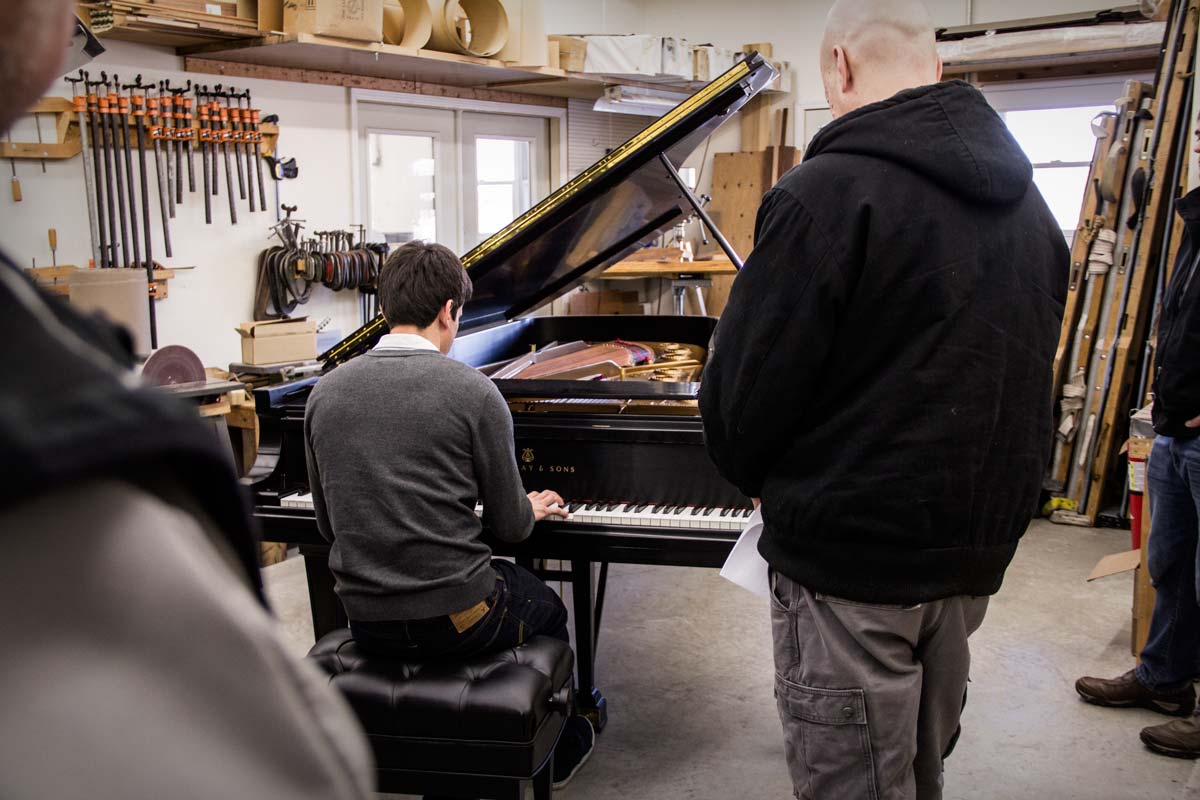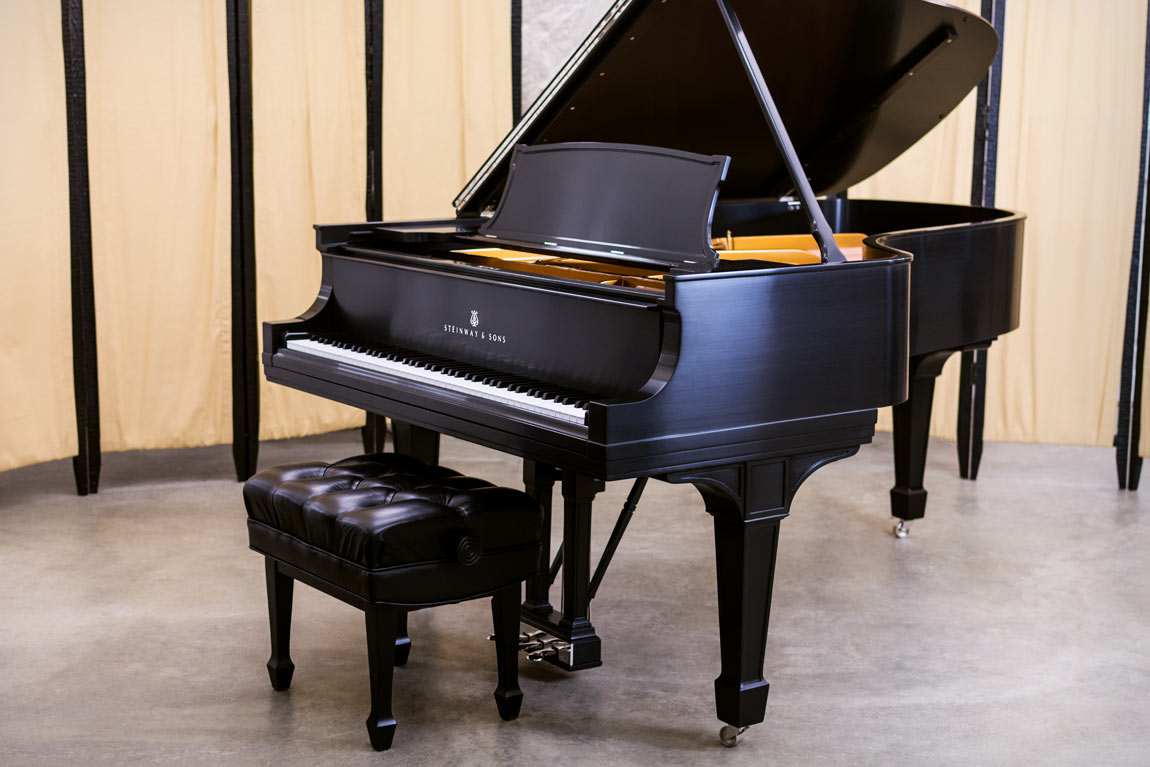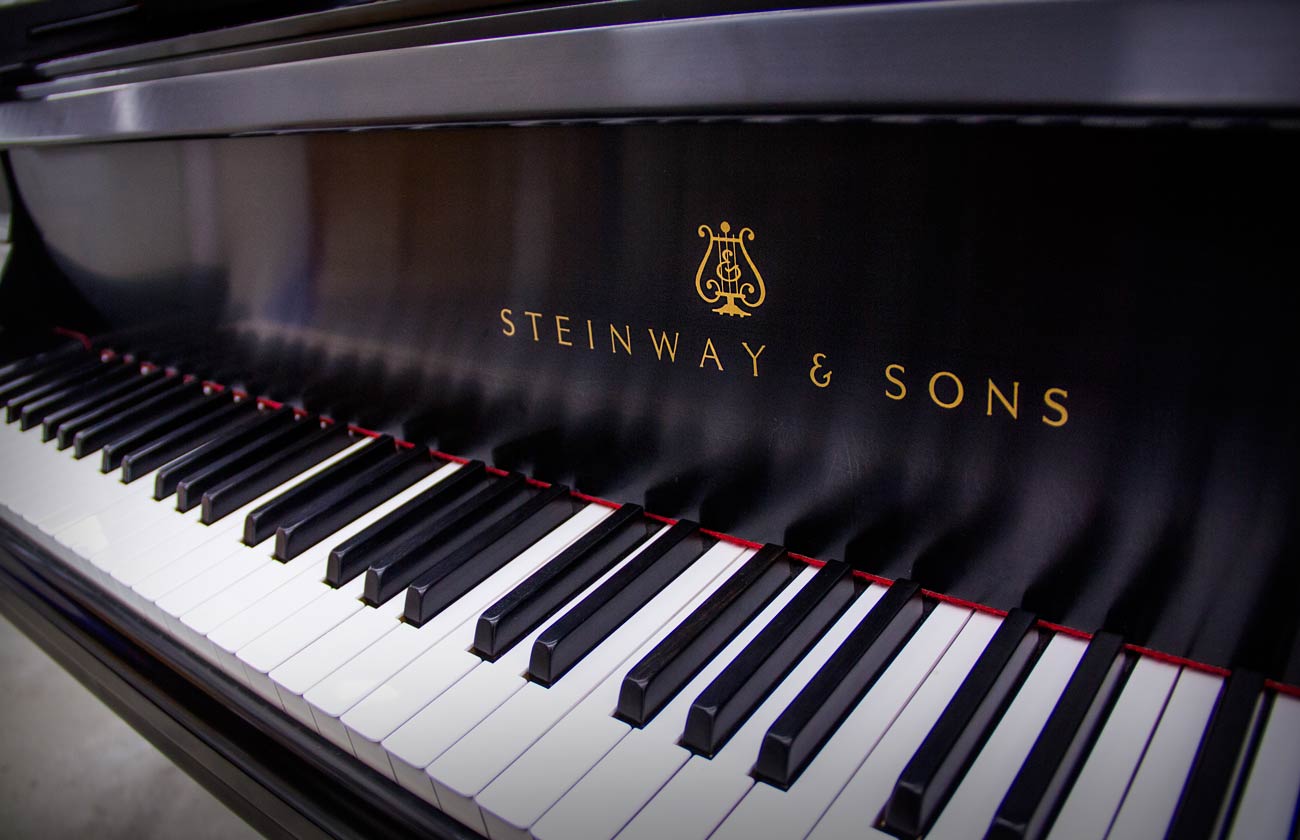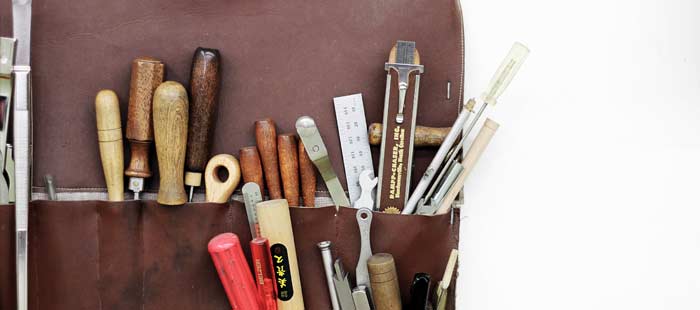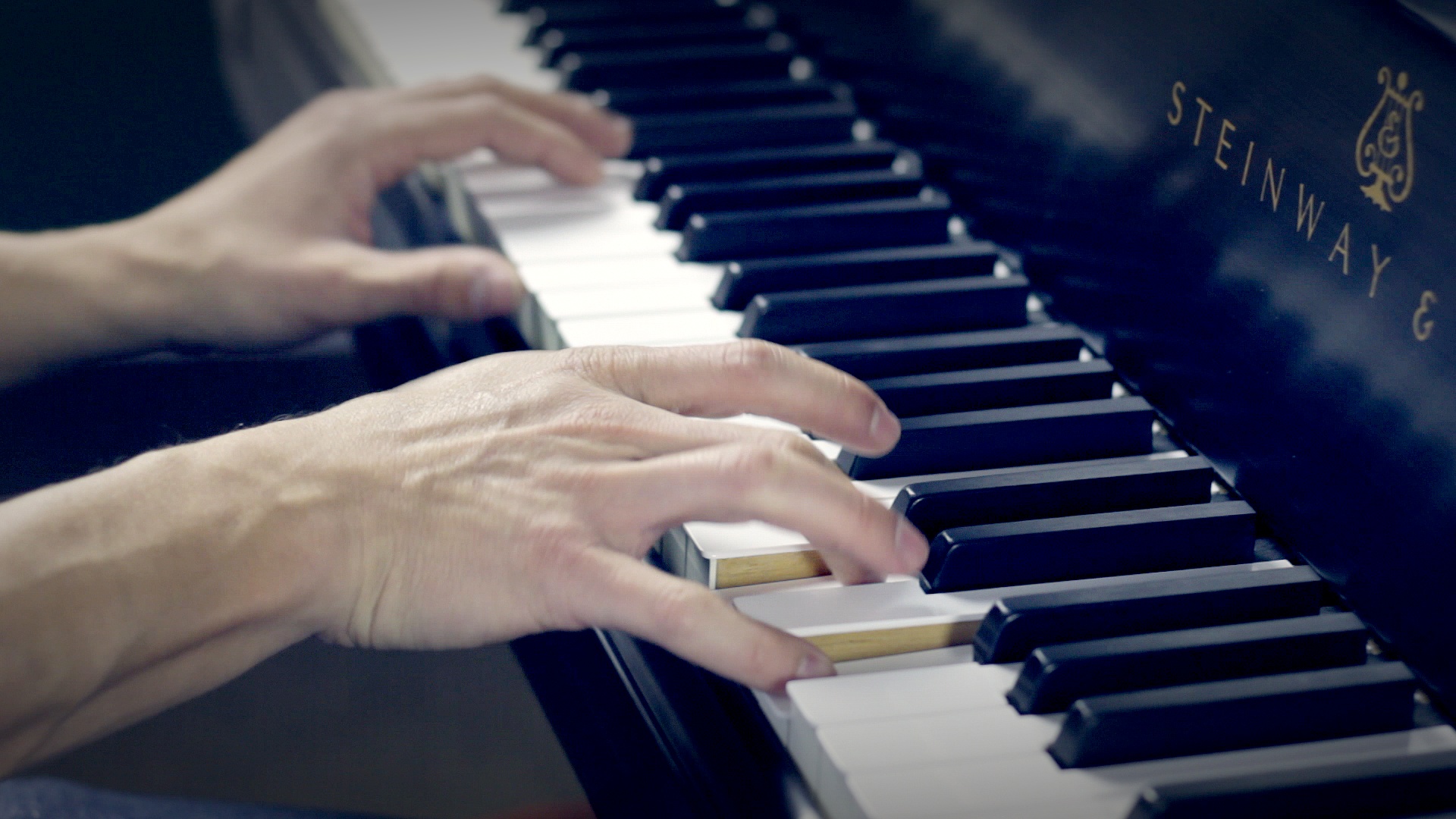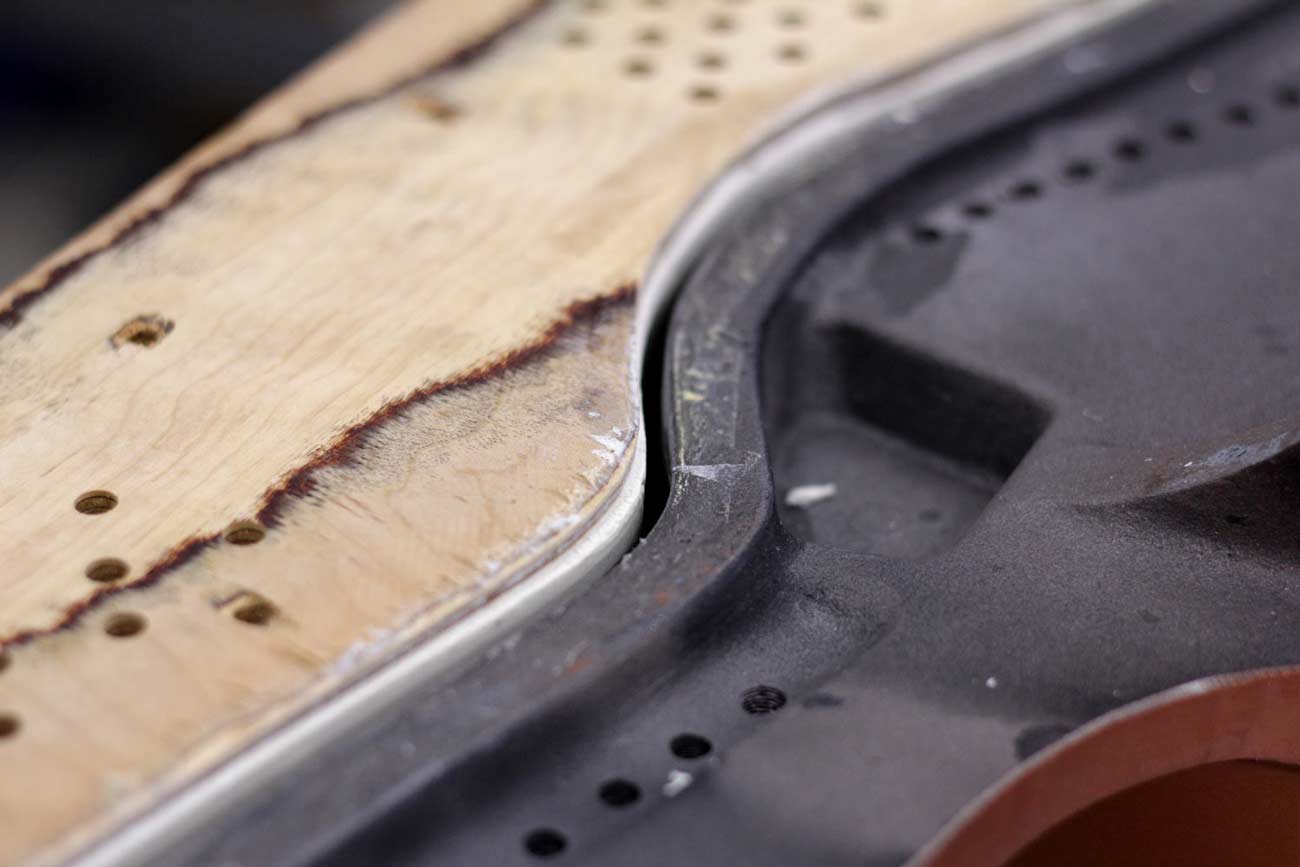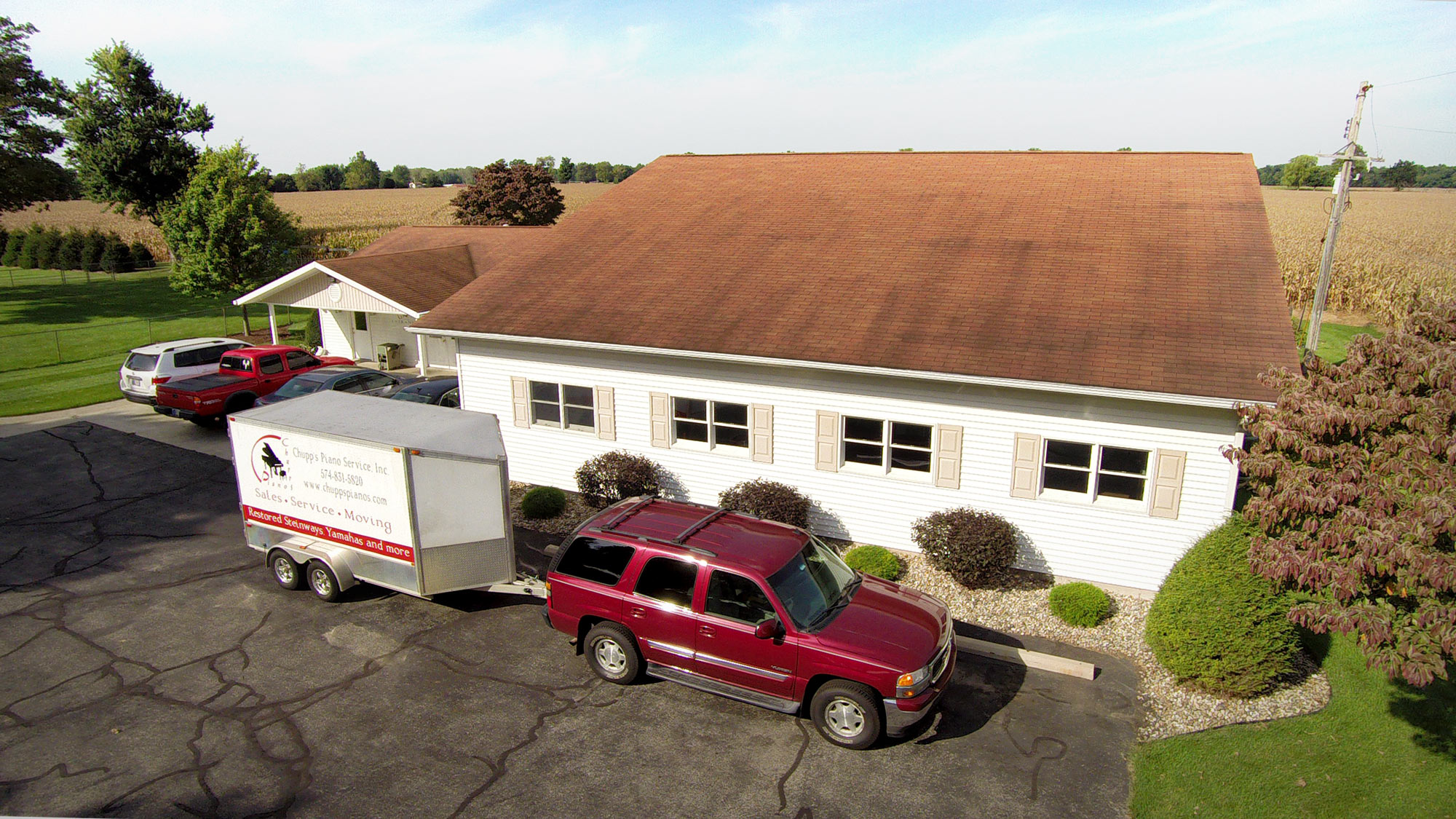“A Magnificent Instrument” Solungga Liu’s Restored Steinway B
Concert Pianist and Professor on her Rebuilt Steinway & Sons Model B
Chupp's Piano Service is proud to provide many professional pianists with premium restored Steinway & Sons pianos. Accomplished Concert Pianist and Professor Solungga Liu purchased a rebuilt Steinway & Sons Model B Grand Piano from us. She was kind enough to give us the following testimonial.The Interior Parts of a Grand Piano
A Basic Overview & What You Need to Know
The grand piano is one of, if not the most distinctive and recognizable instruments in history. Invented in the early 1600s by inventor Bartolomeo Cristofori, the piano has a long and rich history. The mention of a grand piano may conjure up images of a shiny black cabinet and seemingly countless black and white keys. But while the outside is magnificent, the inside is where the heart of the piano truly lies. There are over 12,000 parts in a ‘basic’ Steinway grand piano and the vast majority of them are held in the interior of the cabinet. The piano truly is a modern mechanical marvel! Here is a quick rundown of the basic interior parts of a grand piano.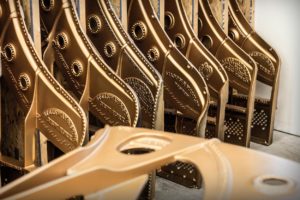 The Plate
The Plate
When lifting the lid and looking inside, the first piano part you probably will notice is the large cast iron plate. Although colors and casting methods vary from manufacturer to manufacturer, the basic function of the plate stays the same. The plate (sometimes called the piano's harp) serves as the backbone for the piano. The strings are affixed to the plate and the pins in the pinblock, so it must be able to withstand up to 40,000 pounds of tension. The large holes you see on the plate are cooling holes, which allow the cast metal to cool evenly. Usually the plate features various patent information and logos from the manufacturer. (You have to put your branding somewhere!)
A Personal Project | Restored Lane Cedar Chest
The Restoration of a Lane Cedar Chest
Every once in a while, it is good to complete a personal project for yourself. Kyle recently dug a vintage 1959 mid century modern Lane cedar chest out of a barn. Lane was America's leading manufacturer of cedar chests beginning in 1912. This chest is a style 1703-50 and features a walnut cabinet with light ash trim. The serial number of 951280 indicates a manufacturing date of 1959. Unfortunately, this cedar chest had seen better days. The old yellowed varnish was stripped and the loose veneer was repaired and then sanded. The entire piece was resprayed in a beautiful semi-gloss finish. Some of the ash trim pieces had fallen off and had become damaged over its years in the barn, so those pieces were carefully repaired and affixed back in place. Kyle and Tim decided to not stain the light trim pieces and leave them in their natural coloring. The original faux drawer pulls were either missing or in bad shape. In any case, they wouldn't do. New knobs were added that fit the modern styling of the cabinet much better than the originals. The chest lock was removed and decades of gunk and corrosion were polished away.The Steinway Model O vs. Model L – What’s the Difference?
Posted on March 1, 2016
at 6:44 pm
by Benjamin Rogers /
Piano History, Steinway Pianos, Uncategorized
The Steinway Model O vs. the Model L | What's the Difference?
Question: “The Steinway Model O and the Model L grand pianos seem to be about the same? What is the difference?
Similar Yet Different | Steinway Model vs. Model L
There are many differences between the various models of pianos bearing the name of Steinway & Sons. From the diminutive 5’1″ Model S to the imposing 8’11” Concert Model D, Steinway pianos run a wide range of sizes and sound. Each size of piano has its place and purpose. However there are models that are considered to be very similar and the Model O and the Model L are two of those. The Model O and the Model L are both about the same size and have actually both replaced each other during various periods in the Steinway & Sons company history.History of the Piano
Learn About Pianos Throughout Time
The creation of the piano dates back centuries, with many different renditions and imaginings of this instrument. While there are scores of books detailing the rise of this musical titan, here are the must knows of a piano's history for any piano enthusiast in a handy infographic!
Dr. Howard Lantner on his Restored Steinway Model C
Letter of Recommendation | Restored Steinway Model C
Chupp's Piano Service recently fully restored a vintage Steinway & Sons Model C Semi-Concert Grand Piano for neurosurgeon Dr. Howard Lantner. He was kind enough to send in the following letter of recommendation about his experience purchasing from Chupp's Pianos.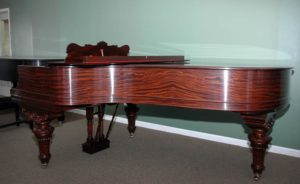 "I had taken piano lessons as a child for few a years. While I enjoyed it, it was a chore to practice, so quit after elementary school. I had hoped to resume it down the road. 24 years later, I finished school and training and settled in Connecticut. My parents still had the old upright piano in their home and let me take it to my home. I started taking piano lessons on it and hoped that one day I would progress enough to be worthy of a vintage Steinway Grand. That was 23 years ago.
"I had taken piano lessons as a child for few a years. While I enjoyed it, it was a chore to practice, so quit after elementary school. I had hoped to resume it down the road. 24 years later, I finished school and training and settled in Connecticut. My parents still had the old upright piano in their home and let me take it to my home. I started taking piano lessons on it and hoped that one day I would progress enough to be worthy of a vintage Steinway Grand. That was 23 years ago.
The Steinway Model A-1 vs. A-2 vs. A-3
The Steinway Model A Family | What's the Difference?
Question: “I was looking at Steinway Model A pianos and noticed that there are pianos labeled Model A-1, A-2 and A-3 and it is getting a bit confusing. What is the difference between these models of Steinway pianos?
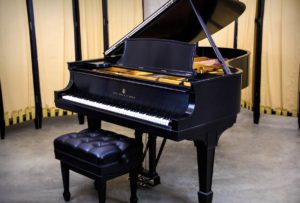
The First Model A Grand Piano | 1878
The Model A family of pianos consists of several 6' variants in Steinway's line of grand pianos. The A-1, A-2 and A-3 are all in the same family, yet there are some distinct differences, and even differences within those models. Steinway & Sons was founded in 1853 and the first Model A, the A-1 was first introduced back in 1878. This piano measured 6’ in length. This piano was an 85 note piano and the scale design was scaled down from the larger Model B. When first introduced the Model A was actually the smallest of all of the grand pianos built and sold by Steinway. (This was before the introduction of the Models S, O, L or M.) The scale design was crafted by C.F. Theodore Steinway, an innovative man credited with many of the patents and technical advances introduced by Steinway in their early days of operation. This model was fairly historic in terms of innovation and introduced the bent-rim case construction, which allowed for a better transfer of soundboard vibrations, a technique still in use today.Our Portfolio of Work | Unique Pianos
Recently we have been updating our website's portfolio section with some of the projects, both past and current that we have completed here at Chupp's Piano Service. I encourage you to view the portfolio section on our site, to see the caliber of work we strive to complete daily here in our workshop. From one of a kind art case pianos, to unique concert hall ready pianos, our work spans a wide gambit. Embedded below are some highlights from our portfolio:
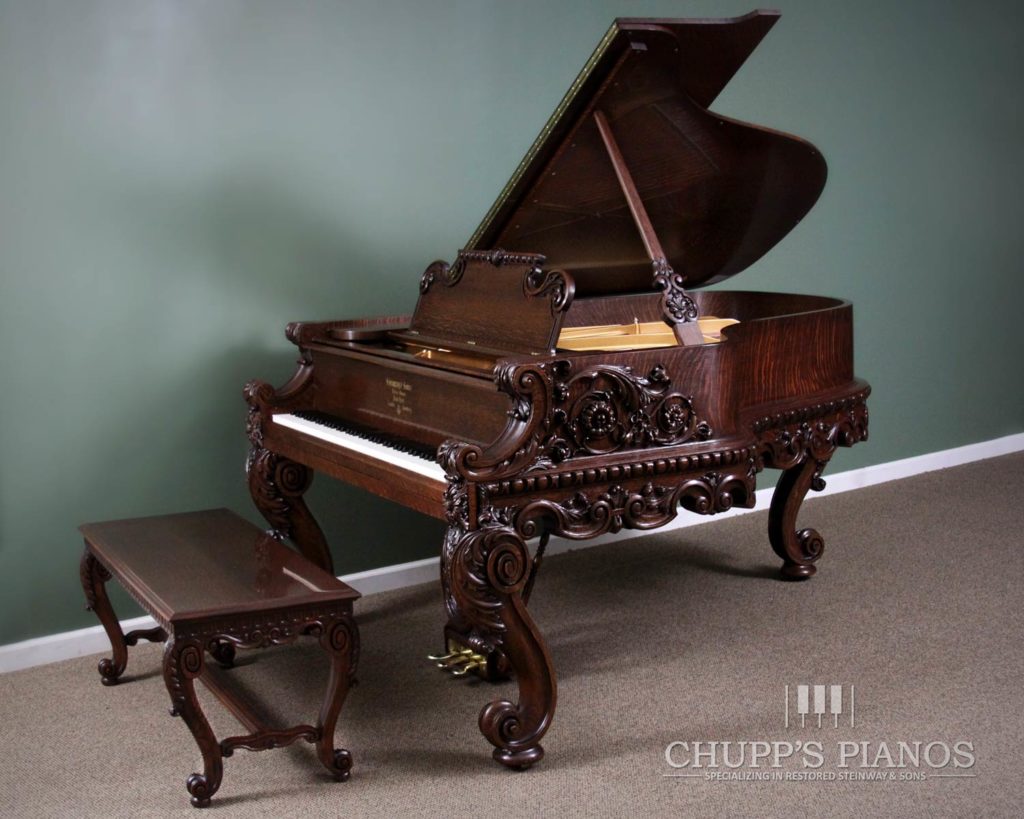
Steinway & Sons Sketch #425 | Only One Manufactured
This Model A-II Grand Piano is the only Sketch #425 ever manufactured by Steinway & Sons. Featuring a stunning Tiger Oak veneer and ornate case carvings, this piano has a long and rich history as well! We completely rebuilt this unique and truly one of a kind piano. Click the photo below to read more.
Chupp’s Pianos Hosts Area Piano Technicians Guild Meeting
January PTG meeting held at Chupp's Facility
We regularly host Piano Technicians Guild meetings in our rebuilding facility here in New Paris, IN. The local PTG held their January meeting here at our shop and I hosted the lessons and discussions. We went over some Tips, Tricks and Techniques for minor piano repairs. Also discussed was how to deal with difficult and distasteful situations when going into customer's homes to work on their pianos. (Mainly disruptive or aggressive animals, ect.) The highlight of the meeting was a comparison of five sample hammers on one of our rebuilt Steinway Model A-II Grand Pianos from five different manufacturers. Blind tests were conducted among the technicians to determine which hammers produced the best tone. We also played and assessed the power and tone of Steinway Model D #269017. This fully rebuilt and restored concert grand piano features a custom action and a unique and powerful Western Red Cedar soundboard.The Steinway Model B – “The Perfect Piano”
About the Steinway Model B Grand Piano
The First Model B Grands | 85 Notes
The Steinway & Sons Model B is considered by many to be a perfect balance of size and power making it a very versatile instrument. Measuring 6'11" in length, 58" in width and weighing well over 700 pounds these pianos are much larger than a Steinway Model S, M, or L. (And a bit larger than the somewhat comparable Model A-II.) The Model B 'Music Room Grand' was introduced in 1878 as a replacement for the piano that Steinway called the Monitor Grand. This instrument is considered to be the first modern piano ever built by Steinway. (The first several Model B pianos were built in the style of these Monitor Grands.) These early Model B Grands featured an 85 note keyboard and were offered in various art case cabinet styles. A capo d'astro bar was utilized in place of agraffes for notes 52 to 85. In 1891 #73212 the first Model B with an 88 note keyboard was introduced and in 1897 the Steinway factory in Hamburg, Germany began production of the Model B.A Unique Steinway Model D Grand Piano
Model D #269017 | A Unique Steinway Piano
In the early 1980s, I had a long conversation with Fred Drasche the former head service technician at Steinway. As we discussed the history of Steinway and their instruments, he told me that around 1950, Steinway produced two Model D grand pianos with Western Red Cedar soundboards. The red cedar was used in place of the regular spruce soundboards. His words were "those were two of the best sounding Steinway Ds I ever heard." For many years, we here at Chupp's Pianos wanted to install a western red cedar soundboard. This goal was something which we were finally able to accomplish recently! Out of five pianos in which we installed western red cedar soundboards, Steinway Model D #269017 is the most powerful of them all. Some of the finest acoustic guitars incorporate western red cedar tops to obtain optimal tonal quality so utilizing this material in musical instruments is not uncommon. Attached is a link to more information about the piano and photos are embedded below.Schools Need to Have Pianos Restored Too!
Schools Need to Have Pianos Restored Too - Full Potential - Affordable Price
It is common for music-based and regular schools alike to have pianos that need to be restored. Often times, schools have pianos that are not performing at their full potential. Pianos in schools are typically used regularly and are often neglected wherein the instruments gradually lose their sound quality. The consistent, frequent playing on these pianos results in wear that many home pianos never see. Playing music on a piano that needs to be restored is not a pleasant experience, as the piano simply will not produce the rich, full sound that it could. When a piano inside a school is working as it should, everyone using the instrument and listening to it will have a rewarding and enjoyable experience.December Piano Video Roundup | Chupp’s Pianos
12.28.15 | Piano Video Highlights
As the month of December (and the year) come a close here are some of the month's piano music video highlights via YouTube! Hopefully the new year brings with it even more musical joy! Philip Balke performs a beautiful arrangement of Carol of the Bells on a fully restored 1925 Steinway L grand piano. In this video Philip performs the Prelude to the Prodigal Son Suite by Keith Green. The piano in the video is a fully rebuilt Steinway & Sons Model D Concert Grand Piano. On this video we spent more time on the production which we think payed off!Young Chang Pinblock Problems – How We Fix It
The pin block in a grand piano is obviously an important component to both the stability of tone and structural integrity of the instrument. About 40,000 pounds of tension is put on this piece of composite wood by the piano strings. Logically, care must be taken during the manufacturing and re-manufacturing process to ensure a secure and tight fit between the pin block and the cast iron plate. Recently we have come across a number of pianos where care was NOT taken during the factory manufacturing process. We have began/completed work on a number of Young Chang grand pianos where the fit between the plate and the pin block quite frankly was almost nonexistent as you can see in the photos below. Young Chang utilizes a very fine quality pinblock, so the bad fit is rather unfortunate.
Busy Times! A Piano Rebuilding Facility Update
We have a lot going on (as usual) here at Chupp's Pianos. As chilly winter weather continues to push fall into the rear view mirror, progress and new things continue to happen here at our facility. New Steinway & Sons rebuilding projects have recently begun. This includes a rare, 1885 Steinway & Sons Model D Concert Grand. According to records, this piano was the 58th out of around 300 produced in its style. It was the first concert grand in the Steinway line to feature the Henry Z Steinway semi modern scale design! We are excited to begin work on this piano quite soon.
Also of note, is a Steinway & Sons Model B Grand Piano. This particular Model B grand is in a gorgeous Circassian Walnut veneer. The grain detail is quite distinctive and will be absolutely beautiful once we begin the refinishing process. Click here to view more photos of it 'as is.'

